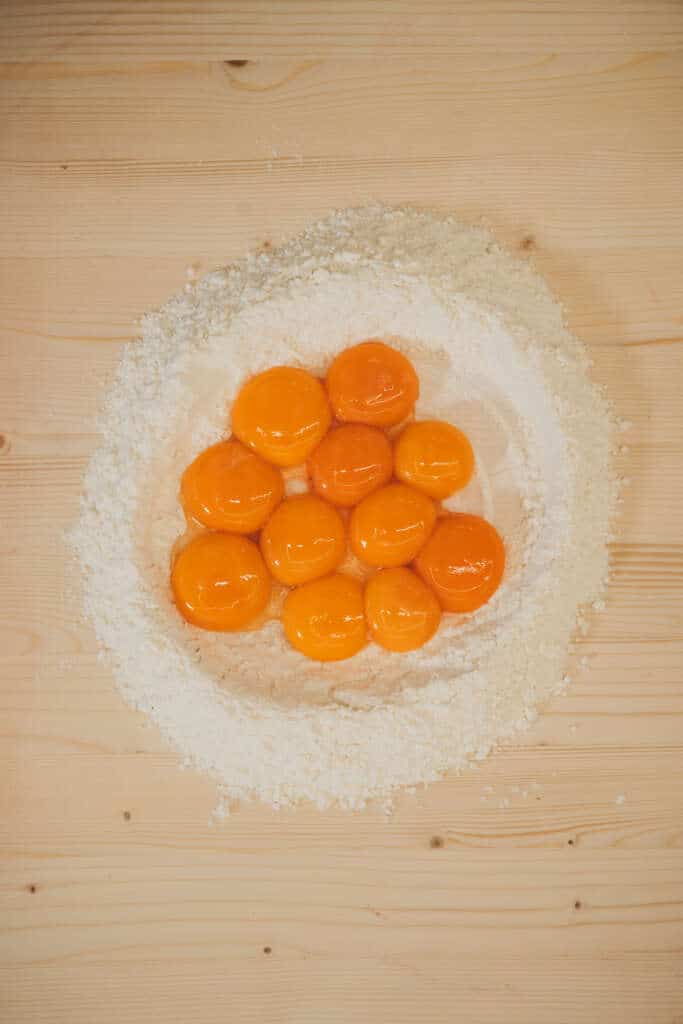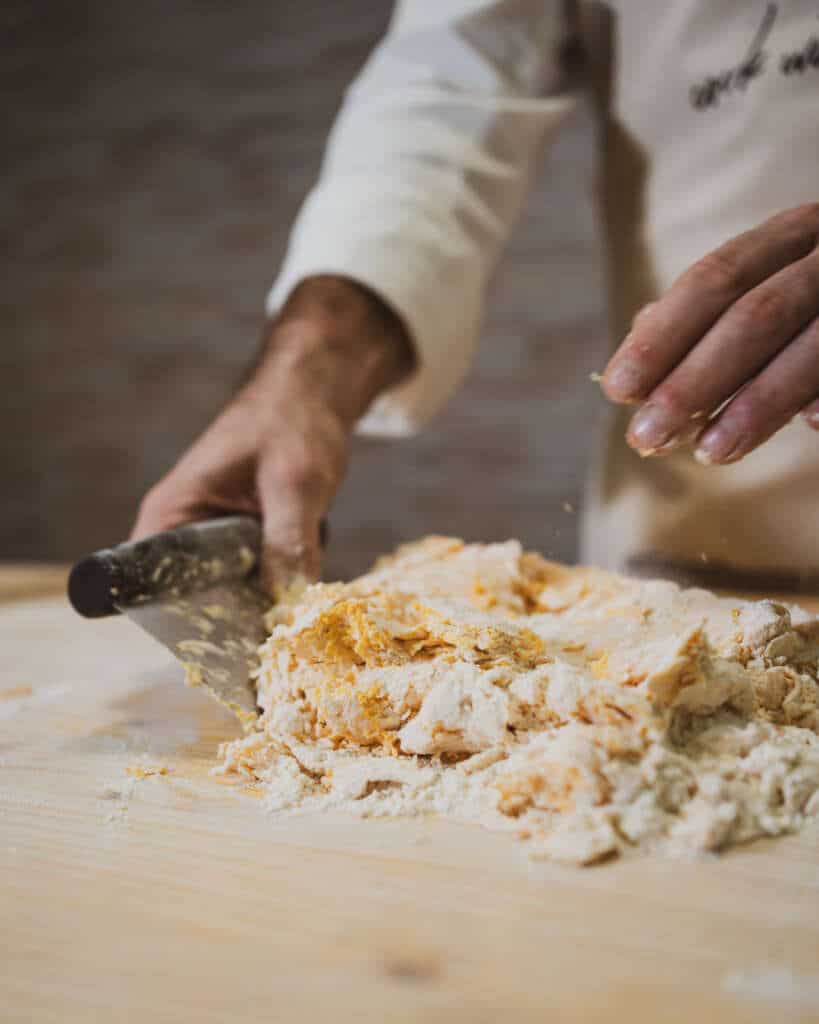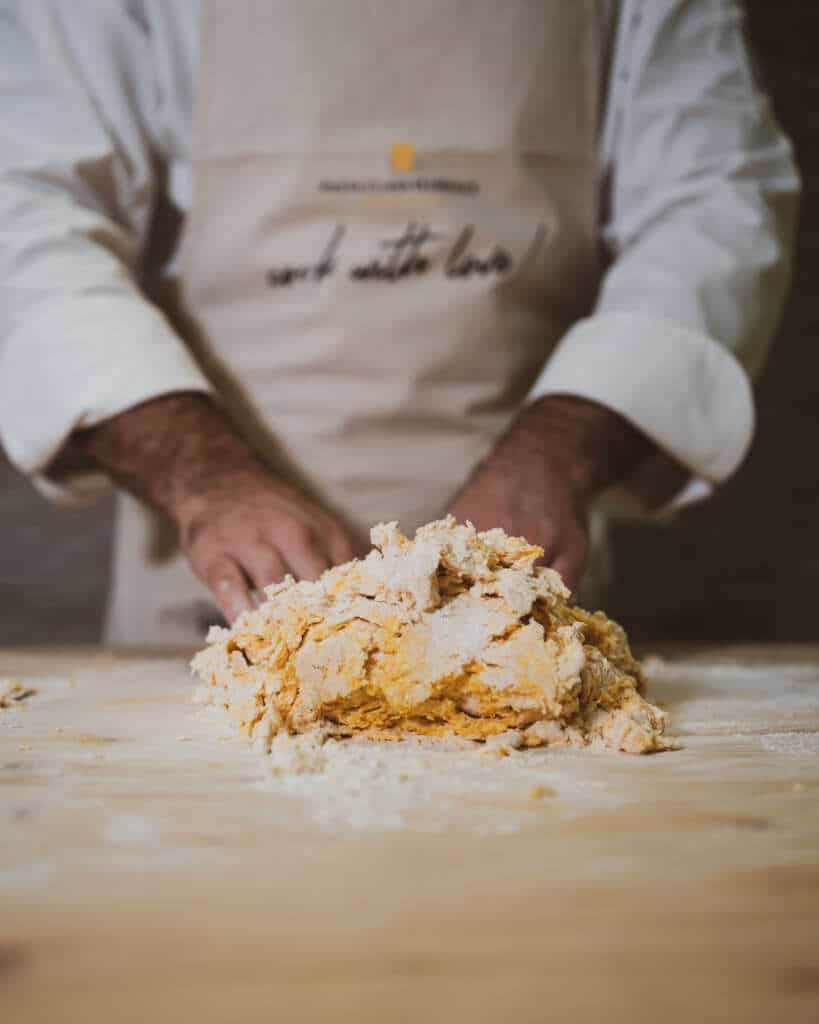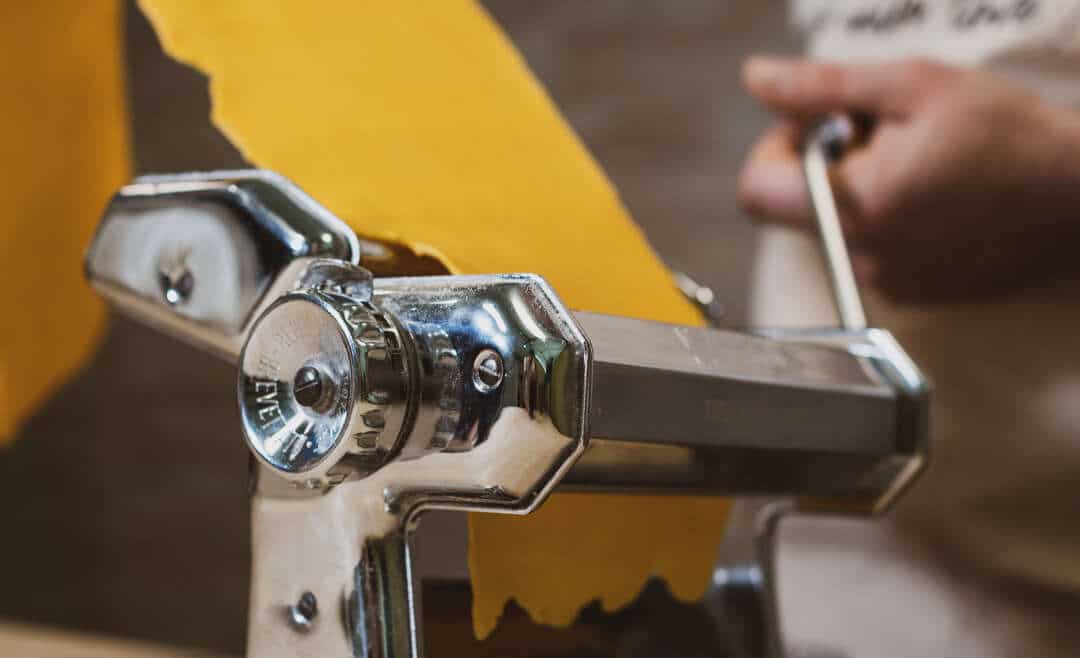Lasagna is a type of fresh egg-based pasta, among the oldest in Italian cuisine. Made from a dough normally made of soft wheat flour, rolled into sheets, lasagne generally has a rectangular shape of variable dimensions: from 5 to 10 cm in width and from 10 to 15 cm in length.
The narrowest lasagna, on average 2-3 cm wide, are commonly called lasagna a nastro (ribbon lasagna) but the names vary from region to region.
In fact, you can find pappardelle in Tuscany, lagane in southern Italy or vincisgrassi in Mache and sagne in Calabria.
Even narrower (about 1 cm) we have lasagnette, similar to large fettuccine.
Lasagna can be homemade, artisanal or industrial and its cooking time varies based on the type of production: from a few minutes for homemade pasta to longer times for industrial variants, both fresh and dry.
The rectangular lasagne are blanched for a few minutes, then seasoned in layers and placed in the oven. The ribbon ones, on the other hand, are cooked like all long pasta shapes.
Like all egg pasta, lasagne can also be colored by adding particular ingredients: powdered ones (saffron, sweet paprika, dehydrated vegetables) should be mixed with the flour as desired; the vegetable purées (ratio 1:4 with flour), the tomato paste, the cuttlefish ink and the chopped aromatic herbs should instead be mixed with the beaten eggs before adding them to the flour.
When moist ingredients such as pureed vegetables are added to the dough, it is better to use one less egg and add a little more flour as you work the dough.
Lasagne alla bolognese
Lasagne alla bolognese is a great classic of Italian cuisine, the quintessential first course for Sunday lunch, ideal for serving at family gatherings or with friends, and even suitable for special occasions.
Belonging to the culinary tradition of Emilia-Romagna, particularly that of the city of Bologna, lasagna is loved and recognized in all regions of Italy and even abroad, becoming a true symbol of Italian gastronomy.
Classic Bolognese lasagna is prepared with layers of egg or spinach pasta, béchamel sauce, Bolognese ragù and grated Parmesan cheese.
The entire dish is then baked in the oven to achieve a final result with a creamy interior and a slightly crispy surface.
As with most recipes that involve baking, lasagna can also be prepared a day in advance, stored in the refrigerator, well-covered with plastic wrap, and then baked shortly before serving (or even stored in the freezer and baked when you need).
When properly stored after cooking, they are delicious even the next day and the day after that.
The secret to make the best Italian Lasagna is to seal them well with plastic wrap or place them in an airtight container. Just before serving, you can simply reheat them for 10 minutes in a preheated static oven at 190°C (375°F).
What do you need to make Italian Lasagna
Making lasagna is not complex but does require some time.
- First, you will need to prepare the ragù with a classic sauté, minced meat, and tomato passata; while the ragù simmers slowly, make the homemade béchamel sauce.
- Then, dedicate yourself to the fresh egg pasta: after making the dough, form the sheets and boil them in plenty of boiling, slightly salted water for about 40 seconds. Then, transfer them to a bowl of cold water to stop the cooking process and arrange them well spaced out on a dry kitchen towel.
- Once all the ingredients are ready, you just need to assemble them and bake for 40 minutes
How to prevent the pasta from sticking to the bottom and sides of the baking dish?
The secret is to butter the pan, even in the corners: this trick will also add more flavor to the lasagna.
Alternatively, you can simply pour a shallow ladle of ragù on the bottom.
The original recipe of Italian Lasagna calls for the use of spinach pasta, but as an alternative, you can use the classic egg pasta, both fresh and dried. Ideally, making fresh pasta at home would be great, but if you don’t have a pasta machine or want to reduce preparation time, you can purchase ready-made pasta sheets.
Not only one type of Lasagna
Lasagna comes in many variations: in addition to the most classic and traditional versions like Neapolitan lasagna (or Carnival lasagna) and Sicilian lasagna, you can also make white lasagna (without tomato sauce) with delicate flavors.
If you need some suggestion, you could try:
- vegetarian lasagna
- artichoke lasagna
- a pumpkin version, perfect for an autumn menu
- lasagna with broccoli and sausage
- sophisticated seafood lasagna
Discover how to prepare Bolognese lasagna following our step-by-step instructions with tips and tricks during one of our classes!
Infact, if you want to find out how to make this traditional dish and many others, why don’t you participate in our cooking classes in Tuscany?
You can find our workshop in the center of Florence, we organize fresh pasta courses every week.




